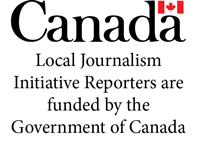There was a time when the words “out of sight” would be uttered with a delighted smile.
Now they are spoken with a pursed-lipped grimace, usually in reference to housing and gas prices.
The cost of buying even a modest dwelling has reached a frightening level that has more to do with perception and comfort than actual numbers.
A study on housing that has been quoted extensively in recent days states that almost 20 per cent of people with mortgages feel they cannot afford their present house, and an even higher percentage, 25 per cent, fear that if interest rates go any higher, they will be forced to sell.
Most of know, or know of someone who took on a debt load so far beyond their level of comfort that they are terrified – but even more scared of being frozen out of the housing market entirely as prices continue to rise. “I could have got that house a year ago for half of what it just sold for,” has become the lament of those who are still hopeful about owning a home.
Not everyone is. Some people have postponed their plans for home ownership indefinitely. Some have even stopped looking for a decent place to rent that is closer to work and are resigned to living in Mom’s basement for the foreseeable future.
That means a commute. When the cost of filling the tank to get to work is biting into savings and the food budget, something is desperately wrong.
Those who live in cities at least have the option of public transit. That is not the case for people in rural areas – the folks who produce the food we all eat, for example, and the employees of the businesses that serve the agricultural community.
A city commute can be a few blocks on an e-bike; around here, it can mean an hour or more in a sturdy enough vehicle for fierce winter weather – a gas or diesel vehicle, since electric vehicles are priced so far out of sight, or rather, beyond what we can afford, it is almost laughable. Besides, EV charging stations are still few and far between.
Increased food bank use is the canary in the coal mine, a key sign that housing, fuel and other basic costs have outpaced people’s ability to pay. When someone applies for help from a food bank, it probably means that parents have been skipping meals so kids can have a bit more on their plates, and that all other options have been explored.
As has been stated by social services agencies and food banks for some time, it is not a sign that food costs too much; it is a sign everything costs too much for a growing segment of our population.
Yes, there is great wealth in this country. There is no shortage of people to buy those million-dollar houses and luxury cars.
What there is, is a shortage of people to fill the retail and service jobs that proved to be so essential during the COVID pandemic – the people who checked through our groceries, poured our coffee, looked after our kids and elderly relatives, and in general, kept our community functioning.
We need more of them and wonder where they have gone. Some have returned to school, to train for a job that pays enough for them to survive. Some have moved away. Mostly, though, they are still here, at least for now, applying for subsidized housing and looking for help from the local food bank. And wondering how they can find the money to travel to work.
If we want a community that truly functions as a community, with all the amenities and a wide range of services and opportunities, we have to work at bringing housing and transportation costs back from the stratosphere – not a decade from now, as high-level economic decisions work their way through the system, but now.
The people running for municipal office this fall need to make housing and transportation costs their priority.



